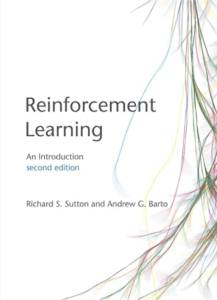Overview of Drift-based Inverse Reinforcement Learning
Drift-detection-based Inverse Reinforcement Learning (Drift-based Inverse Reinforcement Learning) is a method for detecting differences between expert and agent behaviour and estimating a reward function that minimises those differences. In ordinary inverse reinforcement learning (IRL) described in “Overview of Inverse Reinforcement Learning and Examples of Algorithms and Implementations“, the expert’s behaviour is learned directly and the reward function is estimated based on it, and if the expert’s behaviour and the agent’s behaviour differ, it becomes difficult to estimate the reward function accurately, whereas in drift detection-based inverse reinforcement learning, the expert and The difference (drift) in the behaviour of the agent is detected and the reward function is estimated such that the drift is minimised.
An overview of drift detection-based inverse reinforcement learning is given below.
1. calculating the difference between the expert’s behaviour and the agent’s behaviour: drift detection-based inverse reinforcement learning calculates the difference between the expert’s behaviour and the agent’s behaviour. This can be computed in different ways, such as by the distribution of behaviours or feature differences.
2. minimising drift: training the agent using the estimated reward function, so that the agent’s behaviour matches the expert’s behaviour as closely as possible. This minimises the drift of the agent’s behaviour and ensures that the estimated reward function is more accurate.
3. updating the reward function: after a drift is detected, the reward function is re-estimated. This process is repeated until the behaviour of the expert and the agent become aligned.
Drift detection-based inverse reinforcement learning improves the estimation of the reward function by explicitly addressing the differences between expert and agent behaviour, allowing for more accurate policy learning.
Algorithms related to drift-detection-based inverse reinforcement learning.
The following outlines the basic algorithm for drift detection-based inverse reinforcement learning.
1. computation of drift: first, the drift, which is the difference between the expert’s behaviour and the agent’s behaviour, is computed. This can be calculated in different ways, such as distance of the distribution of behaviours or differences in feature values.
2. estimating the reward function: the reward function is estimated such that the drift is minimised. This ensures that the agent’s behaviour matches the expert’s behaviour as closely as possible.
3. learning the agent’s policy: the estimated reward function is used to learn the agent’s policy. This ensures that the agent’s behaviour is closer to the expert’s behaviour. 4.
4. updating the reward function: as the agent’s policy improves, the reward function is estimated again. This process is repeated until the agent’s behaviour is as close as possible to the expert’s behaviour.
5. check for convergence: check whether the algorithm has converged and set termination conditions if necessary. Convergence is usually considered to have occurred when the change in the reward function or policy becomes small.
The algorithm for drift detection-based inverse reinforcement learning sees the difference between the behaviour of the expert and the agent as drift and estimates the reward function such that the difference is minimised, thereby effectively learning the policy.
Drift-detection-based Inverse Reinforcement Learning application examples.
Drift detection-based inverse reinforcement learning has been applied in various domains. Examples of its application are described below.
1. robot learning: drift detection-based inverse reinforcement learning is used in robot control and behaviour learning. By estimating the reward function from the expert robot’s movements and learning the agent’s policy, the robot’s operation can be improved, e.g. when learning how to grasp and manipulate objects.
2. behaviour control of automated vehicles: drift detection-based inverse reinforcement learning is used in behaviour control of automated vehicles. It can learn safety- and efficiency-aware driving behaviour from the behaviour of expert drivers, thereby making the operation of self-driving vehicles as similar as possible to human driving.
3. video game AI learning: drift detection-based inverse reinforcement learning is used in video game AI learning. Optimal in-game behaviour can be learnt from the behaviour of expert players, thereby making AI players behave more like humans.
4. traffic flow modelling: drift detection-based inverse reinforcement learning is used in traffic flow modelling. Models for traffic flow control and traffic simulation can be estimated from expert driver behaviour.
Example implementation of Drift-detection-based Inverse Reinforcement Learning.
Implementations of drift-detection-based inverse reinforcement learning (Drift-based Inverse Reinforcement Learning) vary depending on the specific task and environment, but examples of implementations based on common techniques are given. In the following example, the basic algorithm for drift-detection-based inverse reinforcement learning is implemented using Python and NumPy.
import numpy as np
class DriftBasedIRL:
def __init__(self, expert_trajectories, agent_trajectories, num_features, learning_rate=0.01, gamma=0.99, num_iterations=1000, tolerance=1e-5):
self.expert_trajectories = expert_trajectories
self.agent_trajectories = agent_trajectories
self.num_features = num_features
self.learning_rate = learning_rate
self.gamma = gamma
self.num_iterations = num_iterations
self.tolerance = tolerance
self.weights = np.zeros(num_features)
def compute_feature_expectation(self, trajectories):
feature_expectation = np.zeros(self.num_features)
for trajectory in trajectories:
for state, action in trajectory:
features = self.compute_features(state)
feature_expectation += features
return feature_expectation / len(trajectories)
def compute_features(self, state):
# Functions to compute features from states.
features = np.zeros(self.num_features)
# Implement feature calculation logic.
return features
def compute_drift(self):
expert_expectation = self.compute_feature_expectation(self.expert_trajectories)
agent_expectation = self.compute_feature_expectation(self.agent_trajectories)
return expert_expectation - agent_expectation
def update_weights(self):
for _ in range(self.num_iterations):
drift = self.compute_drift()
self.weights += self.learning_rate * drift
if np.linalg.norm(drift) < self.tolerance:
break
def get_reward(self, state):
features = self.compute_features(state)
return np.dot(features, self.weights)




コメント